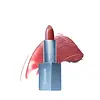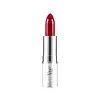What's inside
What's inside
 Key Ingredients
Key Ingredients

 Benefits
Benefits

 Concerns
Concerns

 Ingredients Side-by-side
Ingredients Side-by-side

Ricinus Communis Seed Oil
MaskingCaprylic/Capric Triglyceride
MaskingSilica
AbrasiveEuphorbia Cerifera Wax
Bis-Diglyceryl Polyacyladipate-2
EmollientOctyldodecanol
EmollientLanolin Oil
EmollientPentaerythrityl Tetraethylhexanoate
EmollientBeeswax
Emulsion StabilisingCopernicia Cerifera Wax
Oryza Sativa Bran Extract
Skin ConditioningCamellia Oleifera Seed Oil
Skin ConditioningMicrocrystalline Wax
Emulsion StabilisingTheobroma Cacao Seed Butter
EmollientVitis Vinifera Seed Oil
EmollientButyrospermum Parkii Butter
Skin ConditioningCarthamus Tinctorius Seed Oil
MaskingCitrus Aurantium Dulcis Peel Oil
MaskingHelianthus Annuus Extract
EmollientMangifera Indica Seed Butter
Skin ConditioningRosa Canina Seed Oil
EmollientRosmarinus Officinalis Leaf Extract
AntimicrobialSimmondsia Chinensis Seed Oil
EmollientTocopherol
AntioxidantTocopheryl Acetate
AntioxidantEthylhexylglycerin
Skin ConditioningCaprylyl Glycol
EmollientVanillin
MaskingLimonene
PerfumingLinalool
PerfumingIron Oxides
CI 77742
Cosmetic ColorantCI 45410
Cosmetic ColorantCI 77891
Cosmetic ColorantCI 15850
Cosmetic ColorantCI 73360
Cosmetic ColorantRicinus Communis Seed Oil, Caprylic/Capric Triglyceride, Silica, Euphorbia Cerifera Wax, Bis-Diglyceryl Polyacyladipate-2, Octyldodecanol, Lanolin Oil, Pentaerythrityl Tetraethylhexanoate, Beeswax, Copernicia Cerifera Wax, Oryza Sativa Bran Extract, Camellia Oleifera Seed Oil, Microcrystalline Wax, Theobroma Cacao Seed Butter, Vitis Vinifera Seed Oil, Butyrospermum Parkii Butter, Carthamus Tinctorius Seed Oil, Citrus Aurantium Dulcis Peel Oil, Helianthus Annuus Extract, Mangifera Indica Seed Butter, Rosa Canina Seed Oil, Rosmarinus Officinalis Leaf Extract, Simmondsia Chinensis Seed Oil, Tocopherol, Tocopheryl Acetate, Ethylhexylglycerin, Caprylyl Glycol, Vanillin, Limonene, Linalool, Iron Oxides, CI 77742, CI 45410, CI 77891, CI 15850, CI 73360
Ricinus Communis Seed Oil
MaskingCaprylic/Capric Triglyceride
MaskingBis-Diglyceryl Polyacyladipate-2
EmollientEuphorbia Cerifera Cera
AstringentEthylhexyl Hydroxystearate
EmollientLanolin Oil
EmollientTalc
AbrasiveOzokerite
Emulsion StabilisingBeeswax
Emulsion StabilisingPhenyl Trimethicone
Skin ConditioningMicrocrystalline Wax
Emulsion StabilisingHydrogenated Palm Kernel Glycerides
EmollientHydrogenated Palm Glycerides
EmollientCopernicia Cerifera Wax
Vitis Vinifera Seed Oil
EmollientMangifera Indica Seed Butter
Skin ConditioningTocopheryl Acetate
AntioxidantCamellia Sinensis Seed Oil
HumectantBHT
AntioxidantPhenoxyethanol
PreservativeCaprylyl Glycol
EmollientHexylene Glycol
EmulsifyingEthylhexylglycerin
Skin ConditioningParfum
MaskingCI 77891
Cosmetic ColorantCI 77491
Cosmetic ColorantCI 77492
Cosmetic ColorantCI 77499
Cosmetic ColorantMica
Cosmetic ColorantCI 45410
Cosmetic ColorantCI 73360
Cosmetic ColorantCI 19140
Cosmetic ColorantCI 15850
Cosmetic ColorantCI 77742
Cosmetic ColorantTitanium Dioxide
Cosmetic ColorantIron Oxides
CI 45380
Cosmetic ColorantBlue 1 Lake
Cosmetic ColorantRicinus Communis Seed Oil, Caprylic/Capric Triglyceride, Bis-Diglyceryl Polyacyladipate-2, Euphorbia Cerifera Cera, Ethylhexyl Hydroxystearate, Lanolin Oil, Talc, Ozokerite, Beeswax, Phenyl Trimethicone, Microcrystalline Wax, Hydrogenated Palm Kernel Glycerides, Hydrogenated Palm Glycerides, Copernicia Cerifera Wax, Vitis Vinifera Seed Oil, Mangifera Indica Seed Butter, Tocopheryl Acetate, Camellia Sinensis Seed Oil, BHT, Phenoxyethanol, Caprylyl Glycol, Hexylene Glycol, Ethylhexylglycerin, Parfum, CI 77891, CI 77491, CI 77492, CI 77499, Mica, CI 45410, CI 73360, CI 19140, CI 15850, CI 77742, Titanium Dioxide, Iron Oxides, CI 45380, Blue 1 Lake
Ingredients Explained
These ingredients are found in both products.
Ingredients higher up in an ingredient list are typically present in a larger amount.
Beeswax is natural wax produced by honey bees and can be synthetically created. It consists mainly of fatty acid esters and long-chain alcohols.
In cosmetics, beeswax is a emollient. Due to its waxy structure, it creates a protective barrier. This barrier prevents water from evaporating off the skin.
This may not be a good ingredient for oily skin. We recommend speaking with a professional if you have concerns.
Beeswax cannot be removed with water, but can be taken off with an oil cleanser.
Beeswax is also antiseptic and contains vitamin A.
Learn more about BeeswaxThis ingredient is lipid-based synthetic skin-conditioning agent derived from adipic acid and a mixture of fatty acids. It is often called a lanolin substitute.
As an emollient, it helps soften and hydrate the skin. Emollients create a barrier on the skin to trap moisture in.
Due to its fatty acid base, it may not be Malassezia folliculitis safe.
Learn more about Bis-Diglyceryl Polyacyladipate-2This ingredient is an emollient, solvent, and texture enhancer. It is considered a skin-softener by helping the skin prevent moisture loss.
It helps thicken a product's formula and makes it easier to spread by dissolving clumping compounds.
Caprylic Triglyceride is made by combining glycerin with coconut oil, forming a clear liquid.
While there is an assumption Caprylic Triglyceride can clog pores due to it being derived from coconut oil, there is no research supporting this.
Learn more about Caprylic/Capric TriglycerideCaprylyl Glycol is a humectant and emollient, meaning it attracts and preserves moisture.
It is a common ingredient in many products, especially those designed to hydrate skin. The primary benefits are retaining moisture, skin softening, and promoting a healthy skin barrier.
Though Caprylyl Glycol is an alcohol derived from fatty acids, it is not the kind that can dry out skin.
This ingredient is also used as a preservative to extend the life of products. It has slight antimicrobial properties.
Learn more about Caprylyl GlycolCi 15850 is the pigment color red. It is an azo dye and created synthetically.
Azo dyes need to be thoroughly purified before use. This allows them to be more stable and longer-lasting.
This ingredient is common in foundations, lipsticks, and blushes. This color is described as brown/orangey red.
It has many secondary names such as Red 6 and Red 7. According to a manufacturer, Red 6 usually contains aluminum.
Learn more about CI 15850CI 45410 is a synthetic red-pigment and dye.
It often goes by both Red 28 or Red 27; manufacturers label both ingredients as CI 45410.
This dye is commonly found in makeup because it imparts a vivid color. Some types of this dye change color based on pH level and interaction with moisture:
Your skin has a natural pH of around 4.5 - 5.5.
According to the FDA, CI 45410 is not permitted for use in eye products.
Red 27 is a flourescein dye and commonly used as a fluorescent tracer in medicine.
Learn more about CI 45410Ci 73360 is a synthetic red-pink dye.
This ingredient is used to add a violet color to cosmetics.
It is created by reacting phosphoric acid, ammonium dihydrogen orthophosphate, and manganese dioxide.
Ci 77891 is a white pigment from Titanium dioxide. It is naturally found in minerals such as rutile and ilmenite.
It's main function is to add a white color to cosmetics. It can also be mixed with other colors to create different shades.
Ci 77891 is commonly found in sunscreens due to its ability to block UV rays.
Learn more about CI 77891Copernicia Cerifera Wax comes from a palm tree native to Brazil; another name for this ingredient is Carnauba Wax.
This ingredient is used to thicken texture and also leaves behind a film when applied.
Fun fact: This wax has the highest melting point of all natural waxes and low solubility.
Learn more about Copernicia Cerifera WaxEthylhexylglycerin (we can't pronounce this either) is commonly used as a preservative and skin softener. It is derived from glyceryl.
You might see Ethylhexylglycerin often paired with other preservatives such as phenoxyethanol. Ethylhexylglycerin has been found to increase the effectiveness of these other preservatives.
Lanolin Oil comes from lanolin. The solid version of lanolin oil is lanolin wax.
As an emollient, it creates a thin barrier on the skin. This barrier prevents moisture from escaping to keep skin hydrated.
This ingredient may not be Malassezia folliculitis, or fungal acne safe.
Learn more about Lanolin OilMangifera Indica Seed Butter isn't fungal acne safe.
Microcrystalline Wax is created by de-oiling petroleum. It is highly refined and purified before being added to cosmetics.
Microcrystalline Wax is used to enhance the texture and create even consistency. It helps stabilize a product by preventing ingredients from separating.
Ricinus Communis Seed Oil is the INCI name for castor oil.
Castor Oil helps moisturize the skin. It is rich in a fatty acid called ricinoleic acid. This fatty acid helps prevent moisture loss on the skin. This helps keep your skin soft and hydrated. Ricinoleic acid also has anti-inflammatory and pain reducing properties.
Besides hydrating the skin, castor oil is also used to hydrate hair. By keeping the hair shaft moisturized, breakage is decreased. More studies are needed to show castor oil's effective on stimulating hair growth.
Castor oil is created by cold-pressing castor seeds and then purifying the oil with heat. It was used in Ancient Egypt as fuel in lamps and to help treat eye irritation.
The term 'fragrance' is not regulated in many countries. In many cases, it is up to the brand to define this term. For instance, many brands choose to label themselves as "fragrance-free" because they are not using synthetic fragrances. However, their products may still contain ingredients such as essential oils that are considered a fragrance.
Learn more about Ricinus Communis Seed OilTocopheryl Acetate is AKA Vitamin E. It is an antioxidant and protects your skin from free radicals. Free radicals damage the skin by breaking down collagen.
One study found using Tocopheryl Acetate with Vitamin C decreased the number of sunburned cells.
Tocopheryl Acetate is commonly found in both skincare and dietary supplements.
Learn more about Tocopheryl AcetateVitis Vinifera Seed Oil comes from the grape vine. Grape seeds are a byproduct of creating grape juice or wine.
The components of grape seeds have many skin benefits. Research has found it to be antimicrobial and anti-inflammatory. It also contains many potent antioxidants such as Vitamin E , Vitamin C, proanthocyanidins, polyphenols, flavonoids, and anthocyanins. Proanthocyanidin has been shown to help even out skin tone.
Antioxidants help fight free-radical molecules. Free-radical molecules are capable of damaging our cells and other genetic material. Antioxidants help stabilize free-radicals by donating extra electrons. Grape seed extract may help reduce the signs of aging.
The antimicrobial properties of grape seed may help treat acne. However, more research is needed to support this claim.
Grape seed has also been found to help absorb UV rays. Grape seed extract should not replace your sunscreen.
The fatty acids of grape seed oil give it emollient properties. Emollients help soothe and soften your skin by creating a film. This film traps moisture within, keeping your skin hydrated.
Learn more about Vitis Vinifera Seed OilThis ingredient is a combination of red, black, and yellow iron oxide pigments. This combination of colors is usually found in foundation, because it results in a "skin" color.